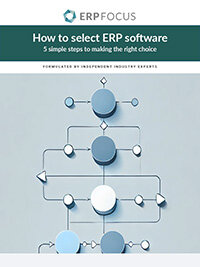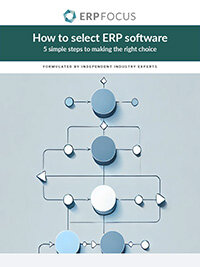Six quick hacks for keeping your ERP team motivated
In the early 90’s I found myself responsible for the project management a large building systems infrastructure in Southern California.
The project plans called for the physical integration of a wide-range of systems within an enormous building. Unfortunately, by the time I came on-board the project was already behind its original production schedule.
The logjam was primarily due to difficulties between senior management, and a host of third-party players. Consequently, not only did I have to spin up the entire project, I had to figure out how to get the herd moving at a rapid pace, while driving toward a set of common goals.
Ultimately, I was able to complete the project by applying various management ploys that set things right, while also making everyone feel part of what was going on. Now, what does my walk down memory lane have to do with ERP, and how you can keep a team happy and well-motivated?
Here are some of the elements I employed to achieve my SoCal success, and how you can use them in order to keep your ERP folks on the ‘right side of happy.’
1. Know your own stuff first
ERP is a complex technology, and successfully executing a proper selection-to-implementation schedule requires attention to many elements. Therefore, be sure that you know your project requirements cold before you consider delegating tasks to any affiliate team member.
Not only will you bring a degree of confidence to the entire evolution, but the awareness will be easily imparted to your subordinates in both word and deed.
Recommended reading: get yourself (and your ERP team) through the selection process with sanity intact using our ERP selection survival guide.
2. Show them the money
Everyone needs a reason to pay attention to less-than-exciting work processes. To be sure, some folks just like working, but more times than not doing something unexciting involves money, or at least an obvious ability to earn it. Consequently the surest way to get everyone on the same page is to clearly point out that if work is not completed effectively, sooner or later everyone will be out of work.
This doesn’t mean that you have to be cynical about it, but there’s nothing wrong with pointing out various financial drivers, if for anything else, than to remind everyone to stay sharp. Why not also offer financial rewards to those who go above and beyond what is required of them?
3. Know what your team needs
In the same vein as knowing your stuff, you’ll also want to know what your ERP team folks really need. This is a nourishing exercise oriented to knowing your people personally, what they are about, and what they are capable of. If you ask them directly, they’ll typically tell you; and if not, work on them until they spill the beans.
4. Get your hands dirty
Sometimes it’s better to stop delegating, and get your hands dirty. In this case you will help your own project effort considerably by working with the troops by jumping in to help when/wherever possible.
5. Leverage the food and beverage cart
While selection is a fairly solitary and straight forward research effort, implementation always involves long days, and even later nights. Consequently, ensure that you to feed your ERP team physically, as well as intellectually. This doesn’t mean you have to spend a load of money, but sandwiches and beer go a long way toward keeping everyone happy and content with their lot within an implementation scheme.
6. Team results are not your results
If you’ve done your job properly, the selection/implementation process should go easily enough. However, never take credit for any positive result, and instead ensure that your ERP team receive the kudos. On the other hand, if something goes south, remember that’s your problem not theirs.
Free white paper

How to Select ERP
Learn to select your ERP in 5 easy steps by following our expert's advice

Featured white papers
-

ERP Software Pricing Guide
Get the latest pricing information on over 80 popular ERP systems, and learn how to budget for your ERP project in our free guide
Download -

ERP Implementation: 9 steps to success
The 9 proven steps you should follow when implementing ERP
Download -

ERP Implementation Checklist
Over 120 actionable steps to implementing a new ERP successfully
Download
Related articles
-

The case for multi-tier ERP implementations
Learn more about multi-tier ERP implementation and why you might need one
-

CMMC Compliance: What Aerospace and Defense Manufacturers Need to Know
Key insights on CMMC compliance, deadlines, and securing DoD contracts with CMMC 2.0 certificatio...
-

An example ERP implementation team structure for your project
Learn about three key elements of an ERP implementation team and the individuals who contribute w...

